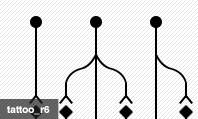Latest Post
The Ethics of Practicing Procedures on the Nearly Dead
The report from the field was not promising by any stretch, extensive trauma, and perhaps most importantly unknown “downtime” (referencing the period where the patient received no basic care like CPR). The patient remained pulseless en route, we were all aware of the markedly poor prognosis.
On arrival the patient was swarmed by providers. Trauma surgeons at the foot of the bed cut down at the femoral artery to deploy a device that might mitigate bleeding – still in experimental stages. The patient’s ability to safely breath was certainly compromised, a tube in the trachea will solve that. Where the blood went was the question, tubes inserted into each of his lung cavities could reveal the answer. Replacing some of what was lost was important too, a straw-sized catheter into a major vessel can help there. The surgeons’ device hadn’t had any appreciable impact so a large cut was made across the left side of the chest – might as well examine the heart and hub of potentially bleeding things in the area. The heart was empty, a surefire sign of as yet unidentified bleeding; contractions were rare and spastic. The time of death was declared and the frenzy of activity ceased.
Students and residents crowd around the open chest cavity as the chief resident explains the procedure and exposed anatomy – a student lingers to close the wound. The bedside ultrasound that revealed fluid in the abdomen was repeated and the unique findings were explained to eager learners. People file out slowly, sharing feedback about the resuscitation, it’ll go even smoother next time.
It’s a common scenario. By most measures this patient was both dead and unsalvageable. The futile attempt at resuscitation was recognized by most at the outset, but proceeded because it provided a bounty of critical experiences for trainees at all levels – experiences which in the future could prove life-saving. Ethical concerns surrounding this tacitly recognized activity are plentiful and our unease as providers suggests that we recognize this though are unsure of how to reconcile our feelings. The major difficulties are as follows:
- Patients have a right to have critical procedures performed by experienced providers.
- Effective training requires live practice and can at best be only supplemented by simulation (cadavers/models).
- Obtaining informed consent is challenging. Patients and their families are not adequately educated regarding the nature of medical training and the operation of teaching hospitals. Further, these discussions are often not feasible during a resuscitation, or may appear insensitive after a failed resuscitation.
- Providers may be deceptive by extending failed resuscitations in attempts to secure procedures for trainees.
The importance of these experiences for trainees is without question. Patients deserve to have experienced providers performing critical procedures, though that in turn requires a sufficient number of those very procedures to gain competency. Teaching hospitals mitigate this discrepancy by closely supervising trainees until procedural competency is achieved.
To secure the necessary certification, training programs must provide sufficient exposure to allow trainees to become proficient at the performance of these critical procedures. Most are common enough that trainees gain competency relatively early in the training period. Others are more rare, and unfortunately still more critical. These prized procedures are indicated in only the most critically ill patients – they are staggeringly invasive but potentially life-saving. It is conceivable that experience gained through resuscitations extended despite a low probability of favorable outcome could be beneficial to future patients.
The solution to this predicament is challenging. What is evident is that patients are not sufficiently educated regarding the nature of medical education and that this leads to dishonesty by providers (who are merely trying to secure the training of their residents for the betterment of future patient care) and a critical breach in the implicit trust of the patient-physician relationship. Some possible responses would be to increase awareness of medical education and training practices through public service announcements – followed by an opt-out policy similar to organ donation in many countries. I’m mostly curious to hear what others think of this practice and how you would feel if you or a family member was in a similar situation.
References:
- Jetley AV, Marco CA. Practicing Medical Procedures on the Newly or Nearly Dead. Chichester, UK: John Wiley & Sons, Ltd; 2012:299–310. doi:10.1002/9781118292150.ch27.
Archive
-
260.
The Ethics of Practicing Procedures on the Nearly Dead
The report from the field was not promising by any stretch, extensive trauma, and perhaps most importantly unknown “downtime” (referencing the period where the patient received no basic care like...
-
260.
The Ethics of Teaching Hospitals
I can’t imagine what the patient was thinking. Seeing my trembling hands approaching the lacerations on his face with a sharp needle. I tried to reassure him that I knew what I was doing, but the...
-
260.
Conscious Conversation: Behavioral Science
Dr. Eran Zaidel is a professor of Behavioral Neuroscience and faculty member at the Brain Research Institute at UCLA. His work focuses on hemispheric specialization and interhemispheric interaction...
-
260.
Progress Report
Two years down, I’m still going. The next two years are my clinical rotations, the actual hands-on training. It’s a scary prospect, responsibilities and such; but it’s equally exciting, after...
-
260.
Why Medical School Should Be Free
There’s a lot of really great doctors out there, but unfortunately, there’s also some bad ones. That’s a problem we don’t need to have, and I think it’s caused by some problems with the...
-
260.
The Cerebellum: a model for learning in the brain
I know, it’s been a while. Busy is no excuse though, as it is becoming clear that writing for erraticwisdom was an important part of exercising certain parts of my brain that I have neglected...
-
260.
Conscious Conversation: Philosophy
Daniel Black, author of Erectlocution, was kind enough to chat with me one day and we had a great discussion – have a listen.
-
260.
The Stuff in Between
I’m actually almost normal when not agonizing over robot production details, and quite a bit has happened since I last wrote an update. First, I’ve finally graduated. I had a bit of a...


